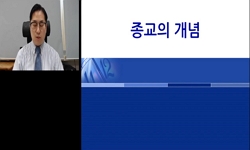The purpose of this paper is to examine the characteristics of causative in Korean and Japanese by analyzing Korean and Japanese causative both in Korean-Japanese and Japanese-Korean translation data. Especially, focusing on the syntactic causative ...
http://chineseinput.net/에서 pinyin(병음)방식으로 중국어를 변환할 수 있습니다.
변환된 중국어를 복사하여 사용하시면 됩니다.
- 中文 을 입력하시려면 zhongwen을 입력하시고 space를누르시면됩니다.
- 北京 을 입력하시려면 beijing을 입력하시고 space를 누르시면 됩니다.
https://www.riss.kr/link?id=A104506208
-
저자
유수연 (조선대학교)
- 발행기관
- 학술지명
- 권호사항
-
발행연도
2017
-
작성언어
Korean
-
주제어
비교연구 ; 사동의 의미 ; 장형사동 ; 의도성 ; 수수동사 ; 형용사의 사동 ; comparative study ; causative meaning ; syntactic causative ; intentional act ; dative verb ; adjectival causation
-
등재정보
KCI등재
-
자료형태
학술저널
-
수록면
341-358(18쪽)
- DOI식별코드
- 제공처
-
0
상세조회 -
0
다운로드
부가정보
다국어 초록 (Multilingual Abstract)
The purpose of this paper is to examine the characteristics of causative in Korean and Japanese by analyzing Korean and Japanese causative both in Korean-Japanese and Japanese-Korean translation data. Especially, focusing on the syntactic causative ‘-key hada’ in korean. For analysis, first the syntactic causative in korean and the Japanese corresponding to Korean syntactic causative was selected. And a causative proper use was divided into manipulation, compulsion, permission, and direction. In addition, ‘-key hada’ verb was classified into the main verb, the helping verb, and the pro-verb. The results are presented as follows: the Japanese corresponding to Korean syntactic causative includes transitive verb use, causative passive, and other constructs similar to causative, i.e., ようにする(youni suru), and ように命じる(youi meiziru). In the case of manipulation, there existed inanimate subject which was personified. There existed two types of adjectival causative, i.e., causation and non-causation in Korean. Accordingly, the corresponding difference was shown in the Japanese translation. In the case of ‘-key hay cuda’ which was a combined form of syntactic causative and dative verbs, there existed a use without causative meaning. This use was translated into ‘てくれる’(te kureru) and the use with causative meaning was represented by ‘てあげる’(te ageru) in Japanese. There existed a difference between compulsion and directions. Directions in the syntactic causative in korean represented a state change of causee, whereas the compulsion did not. Regarding non-causative sentences which were combined to the verbs of reference meaning, i. e., ‘ように 命じる’, extended use of the verbs was observed with appearance of the verb ‘言う’. Furthermore, imperative forms were revealed to be considered as peripheral causative.
목차 (Table of Contents)
- Ⅰ. 머리말
- Ⅱ. 사동의 의미 분류에 관한 연구
- Ⅲ. 한국어 장형사동에 관한 연구
- Ⅳ. 연구 방법
- Ⅴ. 결과 및 분석
- Ⅰ. 머리말
- Ⅱ. 사동의 의미 분류에 관한 연구
- Ⅲ. 한국어 장형사동에 관한 연구
- Ⅳ. 연구 방법
- Ⅴ. 결과 및 분석
- Ⅵ. 맺음말
- 참고문헌
- 논문초록
동일학술지(권/호) 다른 논문
-
한중 소비자들의 위조품 구매의도에 미치는 요인에 관한 실증연구
- 동북아시아문화학회
- 장운비
- 2017
- KCI등재
-
- 동북아시아문화학회
- 동북아시아문화학회
- 2017
- KCI등재
-
20대의 SNS 이용이 시민적 관여(Civic Engagement)에 미치는 영향 : 한국과 몽골 비교연구
- 동북아시아문화학회
- 보양히식
- 2017
- KCI등재
-
- 동북아시아문화학회
- 尾崎高惠
- 2017
- KCI등재





 KCI
KCI eArticle
eArticle



